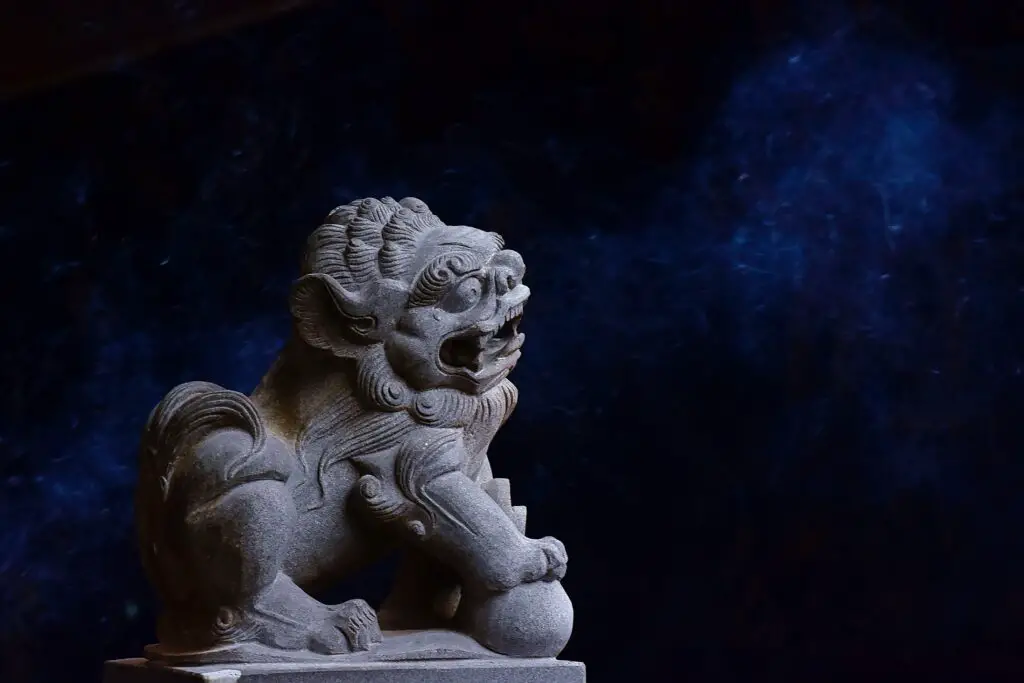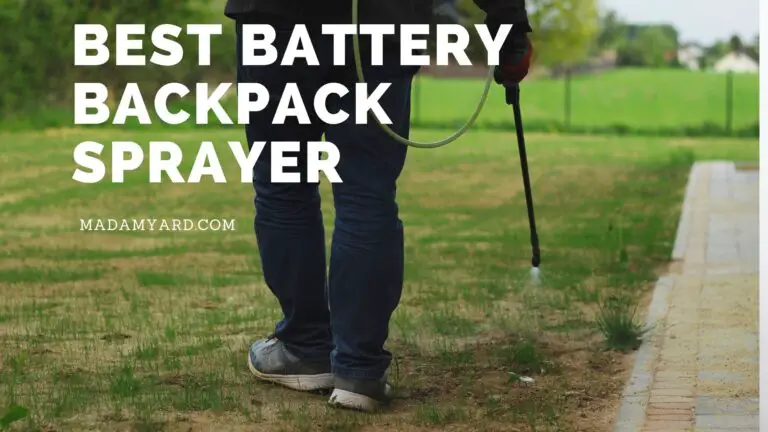How to Make A Concrete Statue?
Statues are popular for lawn decoration. They can be made from various materials, but the most common sculptures are stone or concrete. Statues can be costly, and some people spend thousands of dollars on them. Permanent concrete statues are sometimes made of stone, but they are more common in the form of concrete. So, how to make a concrete statue?
Stay tuned! I will explain the process in this article.

How to Make A Concrete Statue?
The process of making concrete statues is very simple. And it’s also fun! Wire-frame, mold-cast, or free-form concrete sculptures work well for creating statues.
Concrete is made up of an aggregate, cement, and water, and it looks like this: An aggregate is a group or mix of things. As part of making concrete, a sum can be made of sand and other materials like vermiculite. Peat moss and limestone dust can also be used as an aggregate.
There are many different things you can dip in concrete, then put on something or frames, and then let them harden. This is because concrete is liquid-like. Dip towels, crocheted doilies, rags, or socks are things you can use to clean your hands.
Concrete can be poured into or around anything. Make your favorite pair of high tops last forever. Or, of course, those beloved wellies.
Make a wireframe. Chicken wire works well, but check out your favorite hobby store for more wire mesh to make your frame. When the frame is smoothed out, pour concrete on top of the frame. Rebar can be used to make things that are big and heavy.
Or, you could use cement to make a cement sculpture. This is how it works: Make some thicker concrete. Grab some, make a shape, and let it dry for a long time. Use a knife or other tools to cut and shape the figure. Then, add some small pieces of glass, shells, or writing.
Or, you could make a silicone mold of your favorite piece of art and put it in a box. It’s done!
What’s The Best Concrete For Sculpting?
There are a lot of experts who think you should use Portland cement (like Quikrete or Cement All) with a bit of fine sand (like from a sandbox). If you want to make a more rough statue, use some small pebbles to make it. If you are making a small, fine piece, you can cut back on the amount of sand.
1 part cement, 1 part coarse pebbles, and 2 parts sandbox sand make up the essential statuary mix, which most people start with. If you are making a medium-sized statue with a lot of detail, you don’t want pebbles. Instead of using pebbles, you’ll use sand. The proportions will be 1 part cement to 3 parts sand.
Experts say that you should only mix cement and sand with 1 part cement to 1 part sand for a small piece. Or, don’t put sand in.
Concrete sculptors say that the keys to success are your creativity, willingness to practice, and desire to try new things. As for concrete, the same thing is true. It’s not just that there are different types of concretes. There are also various recipes for mixing them together.
Sculptors often use two different mixes for the base: one with a lot of coarse aggregates and another with a lot of fine aggregates, or just cement, for the more detailed parts.
Every sculptor comes up with a unique recipe that works best for their own work style. First, experts say novices should start with a bag of pre-mixed concrete and work their way up from there.
Mixing cement can be dangerous if you don’t wear gloves. Also, think about wearing a mask to protect your lungs from the fine silica dust.
How Do You Make Cement Molds?
Making a mold from a piece of art is a cinch, and you can reuse the mold time and time again. Silicone, fiberglass, and latex rubber supplies are readily available in hobby and hardware stores and in numerous instructional videos.
However, first and foremost, plagiarising another artist’s work for personal gain is unacceptable. Obtain the artist’s permission if at all feasible before duplicating or creating a work of art of your own.
The next step is to design a watertight enclosure for the artwork. Create the box using water-resistant materials like plastic, acetate, or melamine. It’s possible to buy new containers from hobby shops or recycle old ones.
Make or buy a base at least two inches larger than your artwork on all sides. Then, attach your artwork to the base with glue or double-sided tape.
Repurpose a plastic container or cut walls to fit around the base. Glue the plastic container firmly to the base if you’re going to use it. If you’re building a melamine box, seal the edges with silicone. The container must be completely watertight.
Check your box for leaks by adding some water to it. To get an idea of how much silicone you’ll need, try pouring some water into the container.
Much mold-making equipment comes with instructional films. “Put on your best gloves once you’ve studied the manual and seen a few movies. Mix the silicone after that. To use most silicone goods, you must combine two different compounds. Next, add the silicone to your mold and let it set up for a few hours.
Pour or spoon your preferred concrete recipe into the mold once it’s done. Keep an eye out for any gaps or holes. To get rid of all the air bubbles, shake the cement. As soon as it’s ready, check your directions to make sure you’re following them correctly and wait for it to set.
Slitting the silicone mold with tiny slots will make removing your finished cement sculpture easier. As one expert puts it, the easiest way to demold silicone is to heat it up.
How Do You Glue Concrete Statues?
A concrete statue is a great way to add life to your garden. It’s also a great way to show off your love for gardening or your passion for architecture. If you’re new to concrete statues, you may want to learn how to glue them. There are a few ways to glue concrete statues. The easiest method is to use a cement-based epoxy to hold them together even if the statue falls over and cracks. You can also use silicone adhesive, but it’s not as strong as epoxy.
Here’s how you can glue a concrete statue:
- Begin by cleaning the statue’s surface with a wire brush. This will help the adhesive bond better.
- Apply a layer of adhesive to the statue’s surface and let it dry for about an hour.
- Place the statue in its desired location and press down firmly for about 30 seconds.
- Wait 24 hours for the adhesive to fully cure before disturbing the statue.
How Do You Smooth Concrete Statues?
When you are creating a concrete statue, you may find some bumps and lumps that need to be smoothed out. This can be done with a few simple steps. First, you will need to get some sandpaper.
You can use various grades, depending on how smooth you want the statue to be. Start by sanding the most enormous bumps and lumps first. Then, move on to the smaller bumps and lumps. Be sure to take your time and go over the entire surface of the statue until it is smooth. If any areas still need attention, repeat the process until they are soft.
How Do You Reinforce Concrete Sculptures?
Reinforcing concrete sculptures can be accomplished in a variety of ways. Steel rebar is a standard method of reinforcing concrete. You can inject it to strengthen it as it dries in wet concrete. Besides that, you can use wire mesh to support the concrete.
When concrete is still wet, add wire mesh into the mix to avoid cracking and chipping. In high-traffic areas or areas where terrible weather conditions are expected, the concrete sculpture must be reinforced with either steel rebar or wire mesh.
Over time, the sculpture concrete may crack or crumble if not correctly maintained.
How to Make Large Concrete Sculptures?
There are a few ways to make large concrete sculptures. You can use a mold, a pre-made form that the concrete will be poured into. The disadvantage of using a mold is that getting the statue out of it can be challenging without damaging it.
Another option is to build the sculpture out of smaller pieces of concrete and then attach them together. This is often called “casting.” The advantage of this method is that it is easier to make changes to the sculpture if needed.
The third option is to use a technique called “throwing.” This involves shaping the wet concrete by hand into the desired form and then letting it dry.
Final Remark
Making a concrete statue is not as difficult as it may seem. With the right tools and instructions, anyone can create a beautiful statue to display in their home or garden.







